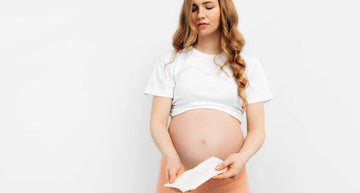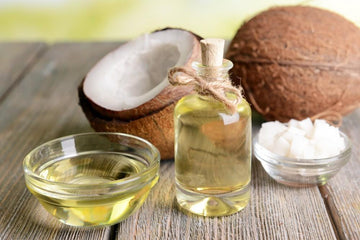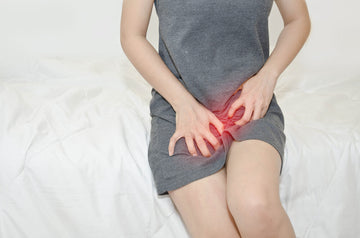Pregnancy and childbirth convey huge modifications to a female's body, including postpartum bleeding, referred to as lochia. The bleeding occurs as the uterus sheds its lining and regularly returns to its pre-pregnancy state. Maternity pads are essential to control this, presenting higher absorption and comfort than regular sanitary pads. New mothers should begin the usage of maternity pads straight away after childbirth, as postpartum bleeding can be heavy in the initial days. These pads provide more coverage, softness, and protection, ensuring comfort during recovery. Choosing the right maternity pad prevents leaks and infections, promoting better hygiene and peace of thoughts during some postpartum period. Understanding their necessity guarantees a smoother transition in motherhood.
What are Maternity Pads?
Maternity pads are, in particular, designed absorbent pads utilized by new mothers to manipulate postpartum bleeding, known as lochia, after childbirth. They are large, softer, and more absorbent than everyday sanitary pads, presenting better protection and comfort at some point in the initial days and weeks following delivery. Made from mild, breathable materials, maternity pads help prevent inflammation and decrease the hazard of infections, ensuring top-quality hygiene throughout postpartum healing.
They provide extra insurance to accommodate heavy bleeding and secure leakage protection, making them essential to a new mom’s postpartum and pregnancy care. Their design guarantees maximum consolation, allowing the body to heal clearly after childbirth.
Importance of Maternity Pads
The significance of maternity pads for new moms is as follows:
Heavy Bleeding Management(Lochia)
After childbirth, women experience lochia, a natural discharge that includes blood, mucus, and uterine tissue. This process lasts numerous weeks as the uterus returns to its normal size. The heaviest bleeding occurs in the first few days of postpartum, requiring an absorbent solution to manage efficiently. Maternity pads are designed to deal with this heavy bleeding, supplying superior absorbency compared to ordinary pads. They ensure that new mothers remain easy, dry, and comfortable.
Better Comfort & Protection
Maternity pads are designed to be longer, wider, and softer than ordinary sanitary pads, offering higher coverage and preventing leaks. The extra length and width help effectively contain postpartum discharge, decreasing the chances of staining clothes or bleeding. The extra softness also minimizes inflammation, which is critical for the recuperation technique.
Maintains Hygiene and Prevents Infections
Postpartum healing requires an extra interest in hygiene because the vaginal area is particularly prone to infections all through this period. Maternity pads help keep the area effortless and dry, stopping bacterial growth and lowering the risk of infections, including postpartum endometritis. Since postpartum discharge is heavier and lasts longer than an everyday period, using a highly absorbent and breathable pad ensures proper hygiene and promotes quicker recovery.
Skin-Friendly & Non-Irritating
New mothers frequently experience increased skin sensitivity after childbirth, making it essential to apply products that can be mild and non-irritant. Many maternity pads are made from breathable, chemical-free materials that reduce the chance of rashes, itching, or allergies. Unlike artificial sanitary pads that can contain strong chemical substances, remarkable maternity pads prioritize consolation and protection, making sure that the delicate postpartum pores and skin are protected.
When to Use Maternity Pads?
Maternity pads are particularly designed for postpartum wellness. They provide greater absorbency and comfort than normal sanitary pads.
After Child Birth
Postpartum bleeding, also known as lochia, normally lasts 4-6 weeks after delivery. The bleeding is heavy in the first few days, making maternity pads vital for maximum absorption and comfort. As time passes and the flow gradually decreases, you can switch to lighter pads for protection and hygiene.
After a C-Section
Even after a c-section, postpartum bleeding, called lochia, nevertheless takes place as the uterus sheds its lining. During this period, maternity pads provide mild safety with high absorbency, supporting manipulation of bleeding without stressful stitches or incisions and ensuring comfort and hygiene.
During Late Pregnancy
During overdue pregnancy, a few women experience increased vaginal discharge or light bladder leaks because of the strain of the developing baby on the bladder. In such cases, maternity pads provide better absorbency and comfort, ensuring safety and retaining hygiene at some stage in the day.
Heavy Periods or Menstrual Conditions
For girls experiencing heavy periods or scientific conditions like PCOS, endometriosis, or fibroids, maternity pads can offer superior absorbency and comfort. They are also useful for handling bleeding after miscarriages or gynecological surgeries, ensuring better protection and hygiene for the duration of healing.
Choosing the Right Maternity Pads
Choosing the proper maternity pads is essential for hygiene and the postpartum period.
Absorbancy
Postpartum bleeding, additionally referred to as lochia, is usually heavy inside the first few days after childbirth. To control this successfully, it's vital to use excessive-absorbency maternity pads that may cope with excess blood loss without frequent adjustments. Choosing thicker pads with a couple of layers guarantees higher absorption, decreasing the risk of leaks and discomfort.
Softness and Comfort
Comfort is a priority postpartum, as the body is restored from childbirth. Cotton or herbal fiber maternity pads provide a soft texture, reducing the probability of inflammation and rashes. Unlike synthetic materials that allow warmth and moisture, natural fabric allows airflow, keeping the skin dry and inflammation-free.
Breathability and Skin Friendliness
Maintaining appropriate hygiene is important after childbirth, as the body is more prone to infections. Breathable, chemical-loose maternity pads allow proper airflow, reducing the hazard of bacterial increase and infection. Many traditional pads contain synthetic fragrances, dyes, and harsh chemical compounds that may be dangerous to sensitive postpartum pores and skin.
Adhesive and Fit
A secure suit is crucial to prevent transferring and leaks, specifically when transferring around or napping. Maternity pads with a sturdy adhesive strip stay in place throughout the day, imparting dependable safety. Winged designs offer additional security by wrapping around the underclothes, stopping vaginal leaks, and ensuring a snug fit.
Conclusion
You should begin the usage of maternity pads immediately after childbirth to manipulate postpartum bleeding (lochia), which may be heavy in the first few days. They are essential for both vaginal births and C-sections, providing excessive absorbency and comfort without disturbing touchy regions or stitches. Additionally, maternity pads are beneficial at some point of past due pregnancy for coping with excess discharge or bladder leaks and for heavy periods or clinical conditions like PCOS and endometriosis. They additionally offer reliable safety after miscarriages or gynecological surgical procedures. As the waft decreases, you could switch to lighter pads. Choosing smooth, breathable, and eco-friendly maternity pads guarantees higher hygiene, comfort, and sustainability for postpartum recovery.
FAQ’s
1. What Is The Difference Between Maternity Pads And Regular Pads?
Maternity pads are larger, more absorbent, and designed to handle postpartum bleeding, while regular pads are meant for menstrual flow and may not provide enough protection.
2. How Long Do I Need To Use Maternity Pads?
Most women use maternity pads for about 2-6 weeks after delivery, depending on the flow of lochia, which gradually decreases over time.
3. What Is The Difference Between Sanitary Pads And Maternity Pads?
Maternity pads are larger, more absorbent, and designed to handle postpartum bleeding, while regular pads are meant for menstrual flow and may not provide enough protection.
4. Do I Need a Maternity Pad After A C- Section?
Yes, even after a C-section, you will experience postpartum bleeding and should use maternity pads for effective absorption and comfort.
5. Are Maternity Pads Safe For Sensitive Skin?
Many maternity pads are designed to be soft and hypoallergenic, but if you have sensitive skin, opt for organic or chemical-free options.





